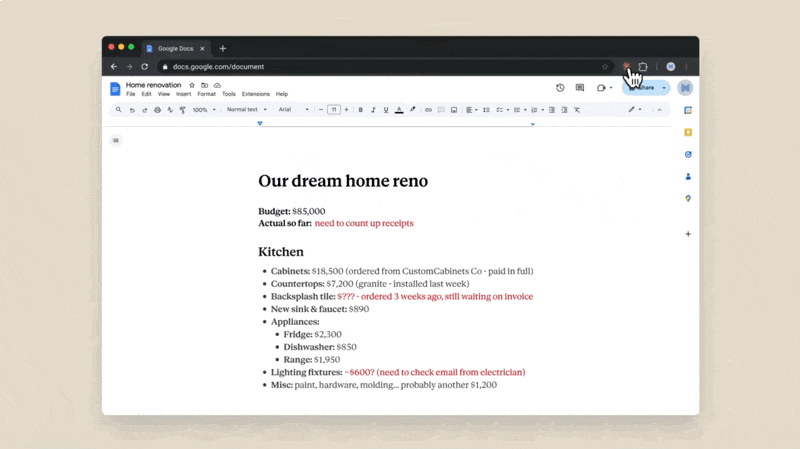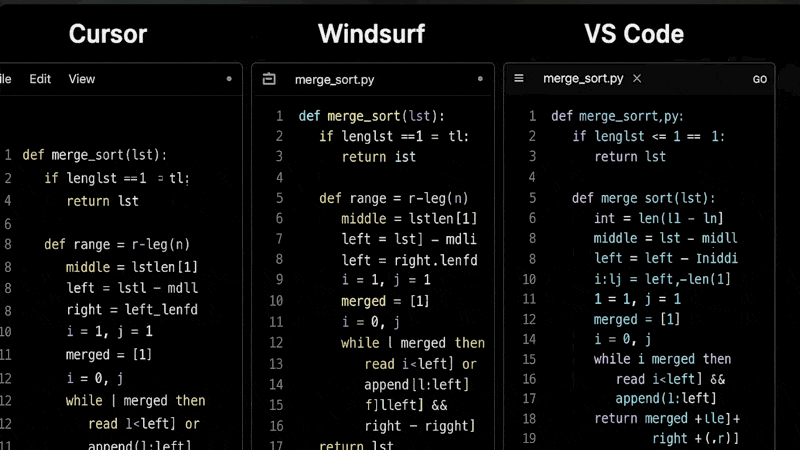Good morning! 👋 It’s one of those weeks where you look around and realize: the tools are no longer the bottleneck. This issue is a reminder that what really matters now is how you put the pieces together. The gap is no longer technical. It’s strategic. Let’s get into it.
.
In this issue:
OpenAI just launched a video app—and it might be the new TikTok 👀
Claude 4.5 quietly became the best coding model on the market 🤫
You’re probably using the wrong AI code editor for how you work ⚙️
One founder cloned an app, skipped ads, and hit $70K MRR ↗️
This new tool builds your entire AI app from a single prompt 🚀
Coupon Extensions Hate Us (And You’ll Love Why)
Coupon Protection partners with DTC brands like Quince, Blueland, Vessi and more to stop coupon extensions from auto-applying unwanted codes in your checkout.
Overpaid commissions to affiliates and influencers add up fast – Take back your margin.
After months of using KeepCart, Mando says “It has paid for itself multiple times over.”
Now it’s your turn to see how much more profit you can keep.
News
TL;DR: OpenAI just launched Sora 2, a major upgrade to its video generation model. It’s more physically realistic, controllable, and now includes audio, speech, and synchronized sound effects. Alongside the model, OpenAI launched Sora, a new invite-only iOS app that lets users remix videos and insert themselves (or their friends) into any AI-generated scene.
Sora 2 models complex physical dynamics with surprising fidelity—e.g., backflips on paddleboards, missed basketball shots that bounce realistically, and cinematic movement across multiple shots.
Audio is now natively supported: speech, background sounds, and effects all sync seamlessly with video, making clips feel dramatically more immersive.
The model supports “cameos”—users can upload a short clip to generate accurate likenesses (face + voice) for self-insertion into any video.
The Sora app is designed around creative social interaction, not passive consumption. OpenAI claims it is “not optimizing for time spent” and includes tools for controlling algorithmic feeds and content exposure.
Sora 2 signals that generative video is no longer a toy, it’s moving toward simulation. The ability to model failure, obey physical laws, and persist world state makes it useful for prototyping, storytelling, or training agents that need to reason about the real world. OpenAI is also staking a claim in consumer social by turning “AI creation” into a shared experience, not just a productivity tool. Keep an eye on cameos—they may be the next frontier for avatar-based communication.
AI
TL;DR: Anthropic just dropped Claude Sonnet 4.5, and it’s now the best open model on real-world coding and computer use tasks. The release also includes a revamped coding environment, a VS Code extension, the new Claude Agent SDK, and significant alignment gains, all aimed at turning Claude into a serious platform for building long-running, multi-step agents.
Sonnet 4.5 leads all public models on SWE-bench Verified (82% w/ parallel compute), and outperforms GPT-5, Claude Opus, and Gemini 2.5 Pro on agent coding, reasoning, and tool use benchmarks.
It dominates OSWorld, a benchmark that tests agents’ ability to actually use a computer (e.g. navigating a browser, filling spreadsheets)—jumping from 42% to 61.4% in just four months.
New features in Claude Code include checkpointing, code execution, file creation (slides/docs/spreadsheets), and a polished Chrome extension.
The Claude Agent SDK gives developers the same runtime and memory management tools Anthropic uses to build its internal agents, enabling real autonomy, not just prompt chaining.
Claude Sonnet 4.5 is more than a better chatbot—it’s infrastructure. Anthropic is quietly turning Claude into a programmable OS for AI agents: long-running, memory-stable, tool-using systems that can operate across interfaces and tasks. The Agent SDK is especially important, it opens up the kind of modular, agentic architecture only frontier labs had access to until now. If you’re building autonomous systems, Claude just became a much more serious option.
Productivity
TL;DR: A new deep-dive video breaks down today’s AI coding tools (Cursor, Warp and Claude Code) into four categories: dedicated IDEs, IDE plugins, CLI tools, and hybrids. Most tools run on the same LLMs, so the real differentiators are UX, workflow integration, and how much control you get over the model.
Dedicated AI IDEs like Cursor and Windsurf offer the smoothest UX: granular change acceptance, model flexibility, and a polished dev environment.
CLI tools like Claude Code and Codex offer the most power and model access but trade off on usability and visual features.
Plugins (like Augment Code for VS Code) are lightweight but often lack rich functionality, which limits agentic workflows.
Warp stands out as a hybrid—merging terminal power with a lightweight GUI (file tree, code editor) and model-agnostic architecture.
Too many of us obsess over which model is best. But in practice, your editor determines your ability. Most AI tools now run the same few LLMs (Claude, GPT, Gemini). What changes your day-to-day is how quickly you can test, edit, and move between tasks. This breakdown makes one thing clear: pick your AI coding stack based on workflow fit, not what you see trending on X. Cursor for UI, Claude Code for raw API muscle, Warp if you want both in one terminal. Try them all. Then go deep on the one that feels like it disappears.
The best HR advice comes from those in the trenches. That’s what this is: real-world HR insights delivered in a newsletter from Hebba Youssef, a Chief People Officer who’s been there. Practical, real strategies with a dash of humor. Because HR shouldn’t be thankless—and you shouldn’t be alone in it.
Founder Story
TL;DR: Vasco built Arvo, an AI-powered SEO content platform, to $70K MRR in 12 months, without spending a cent on ads. His stack is a lean MVP, daily YouTube content, obsessive customer support, and AI-powered internal ops. The most impressive part: his first product literally just emailed articles.
Arvo’s first version was a no-frills email-based article generator. Vasco charged early, validated fast, and skipped the "build forever" trap.
He published daily long-form SEO tutorials on YouTube, building trust and converting viewers into loyal customers.
His Micros SaaS Starter Kit helps founders launch faster by skipping repetitive boilerplate like payments and auth setup.
Forget ads and “go-to-market strategies.” Vasco proved that with a sharp niche, content-led trust building, and relentless customer obsession, a solo founder can bootstrap a profitable SaaS fast. His approach is to start charging early, talk to your customers every day, and let content compound. If you’re stuck building the “perfect” product, this is your reminder—scrappy wins.
Tutorial/Framework
TL;DR: In a new walkthrough, Eric tests Lovable Cloud, a brand-new backend + AI stack that lets you build full AI-native apps with a single prompt. He uses it to create a complete image-generation app (auth, database, AI integration, and frontend) without writing setup code. The platform just launched publicly and is built to replace Firebase/Supabase for developers shipping AI-first products.
Lovable Cloud handles database, auth, roles, storage, and secrets—all auto-generated from natural language prompts inside one interface.
Lovable AI acts as a gateway for multiple LLMs (like Gemini Nano), letting you use one API key across models with zero setup.
Eric’s demo builds a real, working app that generates AI images, saves them to a user profile, and manages accounts, end to end, in one go.
The unified dashboard offers logs, usage tracking, user management, and zero config—all built to scale as your app grows.
Lovable Cloud is quietly one of the most founder-friendly AI dev tools launched this year. If Claude 4.5 is infrastructure for agents, Lovable is infrastructure for shipping AI-native products. It eliminates glue work, boilerplate, and dashboard-hopping. One prompt sets up your backend. One API key connects to multiple models. One UI runs it all. If you want to move from idea to working app in a day, this is worth trying.
Want to sponsor this newsletter? This newsletter goes out to thousands of creators, builders, and early-stage founders every week. If you’d like to get your product or brand in front of them, you can book a sponsorship slot here









